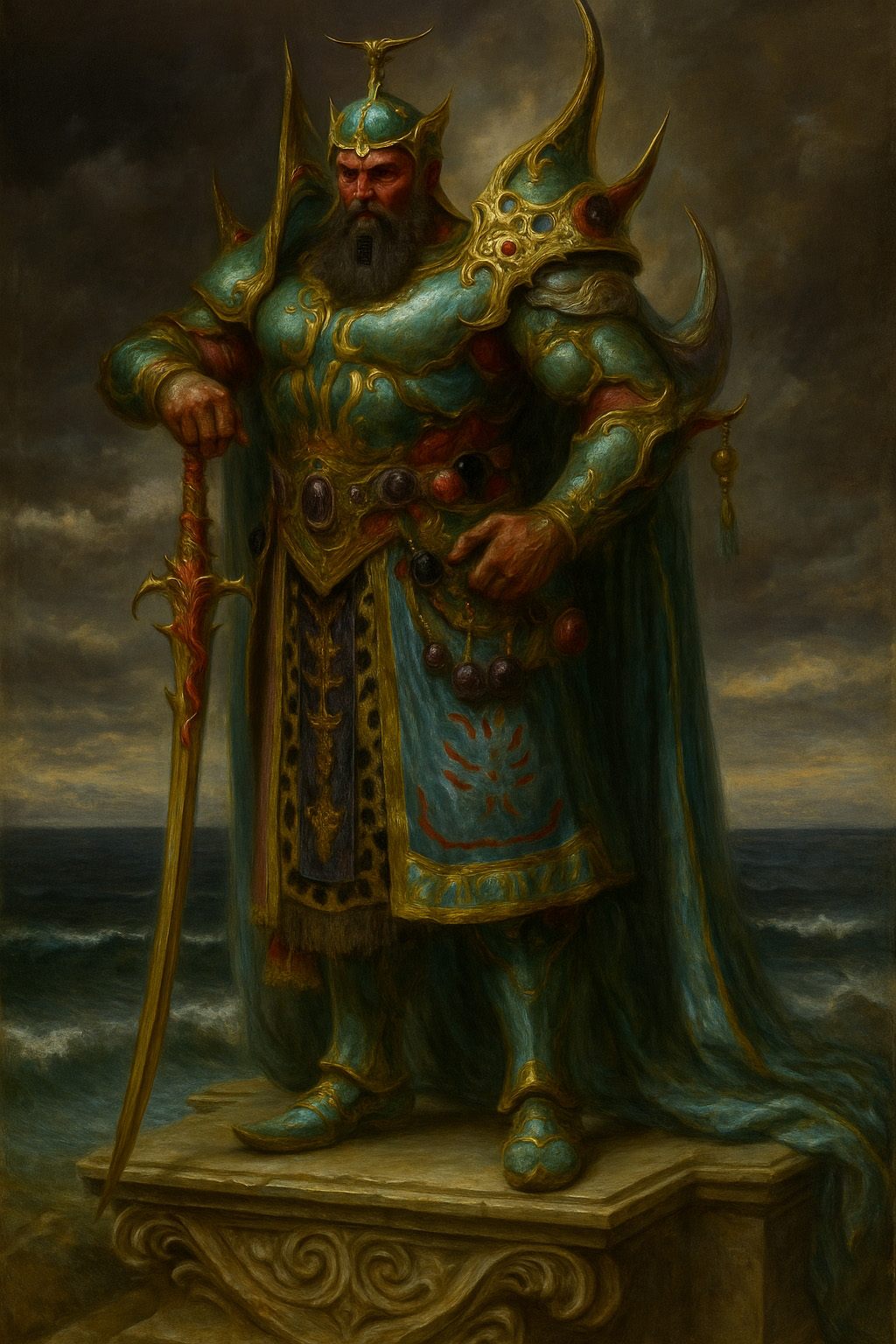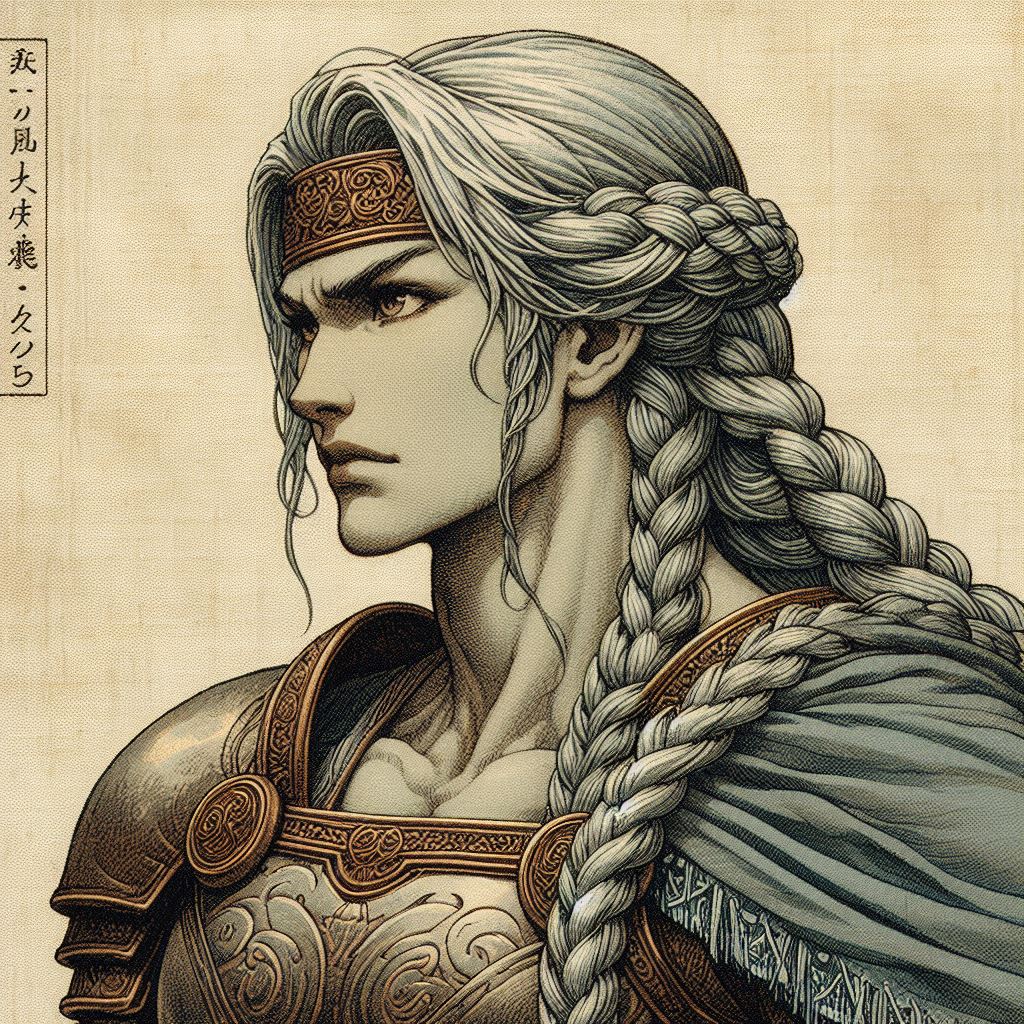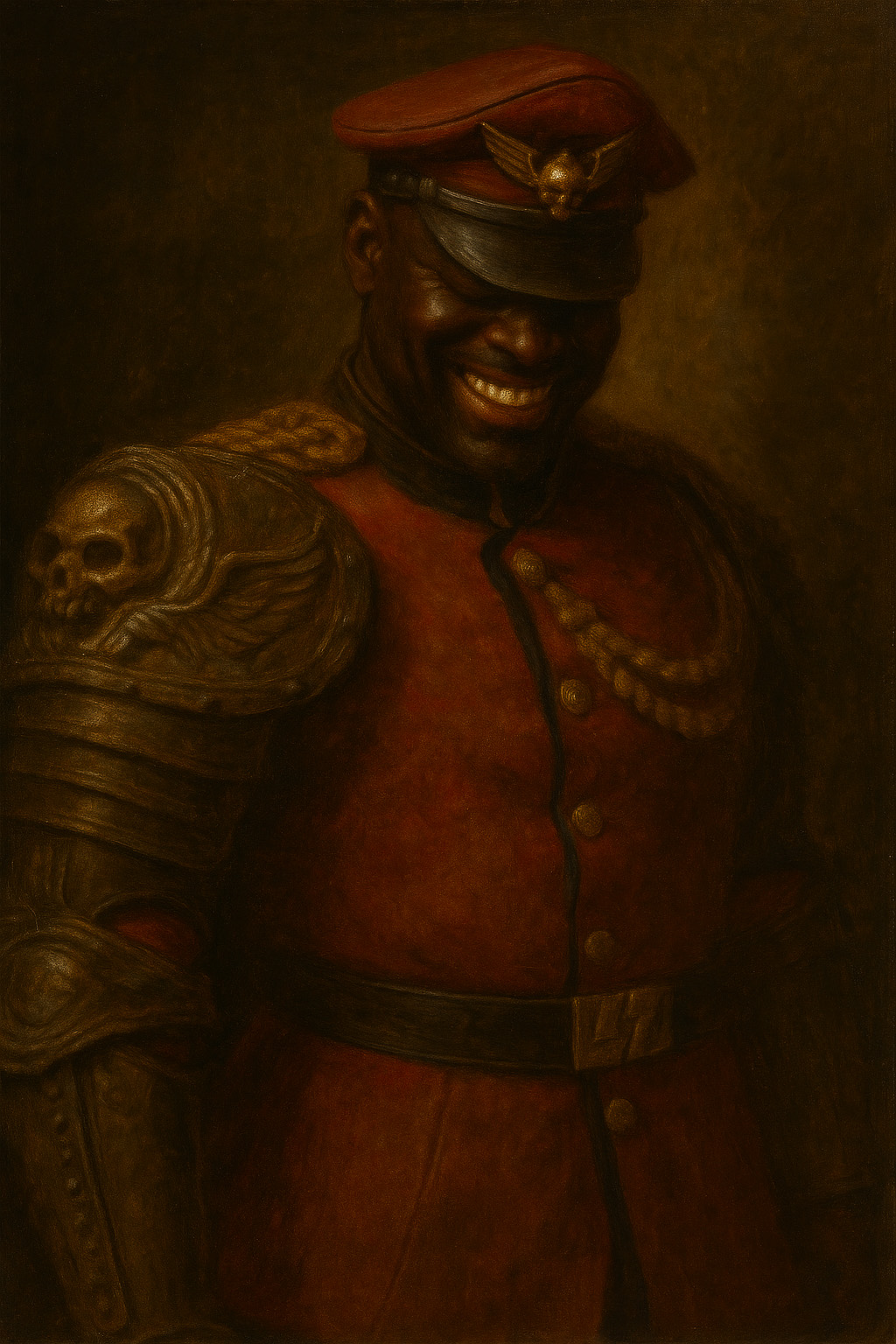Waking Materia
A large water-world on the outskirts of the Known Universe
The name "Materia" likely derives from the Ancient Rozsan word materiet, meaning "foundation" or "autochthon". It is the root for words like matter and material. It is sometimes qualified with the term "Waking" to contrast it with its "Sleeping", coterminous realm, the Duskscape.
Waking Materia has a Low interplanar integration score, meaning fewer than 1% of Waking Materians are aware of other settled planes.
Most Waking Materians use the Yasnan Calendar to measure their days and, within these pages, that is how events pertaining to Materia will be reported.The Duskscape
Waking Materia is unusual in that its Material layer (of the same name) is partly separated from its Spective or Spiritual layer by a mysterious phenomenon known as the Veil. As a result of this separation, its spiritual layer has grown into a vast and dizzying mélange of alien paraecologies and demonic civilizations. Waking Materians give these shadowy, esoteric realms many names: the Dream Time, the Gloaming, Terra Incognita, Nod, the Umbral Provinces, the Ambient, the Night Country, the Farfields, Metaterminus and more. The Author will generally use the Middish Common term: the Duskscape.Material Geography
Waking Materia is a large (5,600 km diameter) plane with an enormous, deep ocean in the centre, called the Sunken Expanse, with a series of scattered continents and archipelagos ringing its outer peripheries. This is the result of a catastrophic, plane-wide flooding event known as The Deluge, now nearly a thousand years past.
The landmasses closest to the planar centre are the Autumn Isles and the Ten Thousand Islands, still several hundred kilometres outward. The landmass closest to the planar perimeter is called Bayelon ("Heavensgate"), extending from Voidwestern Khayyam to about 50 km from Voidspace.
Life on a Water-World
The Deluge had profound effects on life on Materia, not just due to the immediate destruction and displacement, but the resulting, heavily aquatic and island-based geography.
Heavily vertical architecture is common among may Material cultures, due to a relative lack of continental territory, especially after the assignment of viable lands to crops and pasture. It is common to sculpt dwellings and other buildings directly out of hills, mountains and cliffsides; a famous example is the civilization of Ket, a series of cities entirely made up of warrens and cliffside platforms built into two colossal plateaus, however there are hundreds of other examples across the plane. Arcane study is common if for no other reason than to achieve prestigious positions as stonesculptors, who use Stoneshape-type spells to rapidly speed up this process.
Their situation has also forced on Materians an advanced knowledge of agriculture in otherwise inhospitable ecozones, from brackish marshland to sparse highlands, with arable midlands being uncommon and dangerously warred-over. The plane possesses knowledge of plant breeding decades ahead of their median advancement: Material turnips, artichokes, leafy greens, et cetera, are highly valued in interplanar markets for their dense nutrition, and relative ease to grow in arid or saline conditions. The use of "floating gardens" is common on the plane: sometimes tens of square kilometres of lakeland are covered in crops grown on floating platforms, often made of bamboo or darkwood and cultivated by canoe. Kelp farms are common on coasts, including an ancient red kelp that gives some cultures a slightly coppery skin colour.Navigation
For a more detailed explanation of Material navigation, see the full article: Navigation on Waking Materia.
Material navigation is generally measured by two axes: degrees of rotation from a reference point (usually clockwise from Stargrave) and horizontal distance from the central point of the Sunken Expanse.Quadrant System
Materia uses a Quadrant system to divide the plane. The plane's four Quadrants are ordered in the Westward/Clockwise direction, beginning with Stargrave as an analogy to True North or 12:00. The primary civilizations of the Alpha Quadrant include Tiam's Cradle, Skylands, the Mazes of Oloraan and the Commonwealth of Marai.
The Beta Quadrant is largely made up of the massive, haunted floodplain and walled Sultanates of Khayyam.
The Gamma Quadrant encompasses a scattered and diverse crescent of islands that are sometimes collectively called the Broken Empire, once largely united under the Holy Empire of Jura before their sudden retreat. The farthest eastern stretch of this archipelago is called the Spine of Yorm, under which is hidden the magnificent dwarven civilization of Nibelheim.
The Delta Quadrant includes the Constitutional Queendom of Valamon, the Dwarven Megalopolis of Túúr, the Lost Necrocracy of Nireau and the Firstsong Islands.Biology
Biodiversity on Waking Materia is moderate to low. Oceanic biodiversity is higher than the planar average, however this is outweighed by a low terrestrial diversity. This is due to a historical, plane-wide catastrophe known as The Deluge, which eliminated many historical ecosystems and left only upland-type zones, which have been heavily settled by humanoids and their livestock. There remain some areas where natural selection flourishes, but they are at risk as the second chapter of Waking humanoids advances.Sentient Species
Once dominated by interplanar colonization and trade, Material humanoids are highly Meranthic (mixed human-elven), with only a few pure-blooded human (Ur-Anthra) societies and virtually no basal elves (Ur-Mera).
Relatively pure human societies include the Maraian Commonwealth and the Kalevan Freelands of Valamon.
Meranthic elves on Materia include the eladrin, drow and enari. The eladrin are relatively ubiquitous but are especially native to the continent of Ilhalvalaut, as well as a smaller population on the Coreward Maraian islands known as the Rakuyōsei Peoples. Drow primarily reside in the caverns beneath the Emerald Expanse and the Spine of Yorm. Enari are primarily found on smaller, more isolated islands surrounding Stargrave, Tiam's Cradle and the Broken Empire.
Small populations of relatively homogenous arakh exist around the Skylands, Tiam's Cradle and Zvaal.Wildlife
Many oceanic and amphibious species are descended from early placoderms. A common sight around Material coasts and caves are aspid salamanders, with their bony heads taking on a more triangular shape. A particularly feared apex predator is the Dire Skullfish (Earth designation Dunkleosteus), however the apex predators to overshadow all others are the kaiju, a colossal, mysterious and poorly-defined family of what can only be described as sea monsters. Common types of kaiju include linnorms, dragon turtles, mokele-mbembes, dire spinosaurs, krakens and dhuthorexes, however sightings have reported even more individual and often horrific forms. It's theorized they're not fully Material organisms, and may have partially qlippotic or chimeric essences due to bleed-over from the Duskscape (indeed, the Veil is known to be weak in and around Sunken Expanse).Climate
Waking Materia is a generally temperate and humid plane. Due to its highly "fractured" landmasses, very few locations are far from the ocean. Average temperatures tend to decrease Coreward and increase Voidward. The plane cycles between the standard four seasons, with each season lasting an average of 365 days according to the Yasnan Calendar, though historical records tell of certain anomalies, for example a decade-long winter in the Middle First Age known as the Darkest Decade.
The Arcane Layer overlying Materia is moderate to high in activity, resulting in relatively bright days. This in turn means at least partially subterranean lifestyles for light-sensitive species like dwarves, drow, wayangs and svirfneblin.Cosmology
Waking Materia is the Mundane layer—or Weave—of a Class IV or 'Interesoteric' universe, making it one of only a handful of known planes with full Class IV status, below a (still theoretical) Class V or inter-multiversial plane.
Behaviours of the other three layers of the planar complex are as follows.
- The Wyld (Layer I) is moderately active, with slightly above-average frequency of arcane-aspected births and sorcerous bloodlines among Material peoples. Wizardry is not unusually easy or difficult (though it is culturally rare due to a massive loss in magical scholarship due to catastrophic worldwide flooding at the end of the First Age).
- Waking Materia is partially separated from its Spective or Spiritual layer (Layer III) by a mysterious phenomenon known as the Veil: see "The Duskscape" section above.
- The Wane (Layer IV) occurs at a few locations on the plane, most prominently the phenomenon known as Quietus, around which the demonic city of Dis is built. The city is located in the Third Layer; see The Duskscape section, above.
Importance
Waking Materia is a relatively backwater plane settled by only a few Colonial Gods during the First Age, mainly the Lichlord Inum'indiron'aravaut of Lorgain and the siblings Nir and Nef of Rozsa.
Its relatively peripheral location means it was also not directly involved in the wars against the Daybreak Empire. Nonetheless it is distantly involved in the resistance, with the Dragon Knights of Tallarax acting as hosts and sometimes partners to major personnel within The Victorious Noontide, who represent the bulk of the resistance. It is even thought that one or more of the seven demigods leading the Noontide has used Stargrave as a base of operations, seemingly with Tallari-Anaviri-Irallat's blessing.Waking Materia
Class of Reality
Class IV (Interesoteric)
Cruxplanar Region/Tier
Silurian Eighth, 5th Tier
Daybreak Designation
SW8222
Table of Contents
The nigh-apocalyptic Deluge of 2850 I.M. has defined Waking Materia to this day: a water-world heavily adapted to scarce resources and harsh conditions.
Many cities spared the direct assault of the Deluge's tsunamis nonetheless found themselves underwater as the Sunken Expanse blanketed much of the plane's lowlands.
Limited in arable land, population centres are usually dense and built away from flat land, like cliffsides. Material societies often have innovative methods of farming in unusual ecosystems, like brackish wetlands or sheer slopes.
A cliffside house in the Midlands.
A rural palace of the Iname clan of Marai. Stilted or floating settlements are also common. Low-light-tolerant crops may even be cultivated underneath these buildings.
The demonic city of Kloster Storkenfels. Cities even more alien than this are found in the Duskscape: an adjacent realm not only of dreaming & departed souls, but also of intelligent life utterly unfamiliar to the Waking psyche.
A portrait of Emeliat Reis, mortal name of the being now known as the Lady of the Mountain. The Waking Gods are among the most powerful beings on the plane. Somewhat precognitive, their ways can seem alien and unpredictable.
Edvardine Castle in Kintyria-Mors, The Broken Empire.
An enari ranger of the Autumn Isles, clad in landcrab carapace armour.









































































Comments